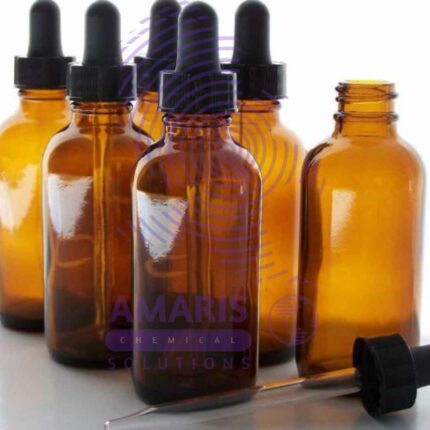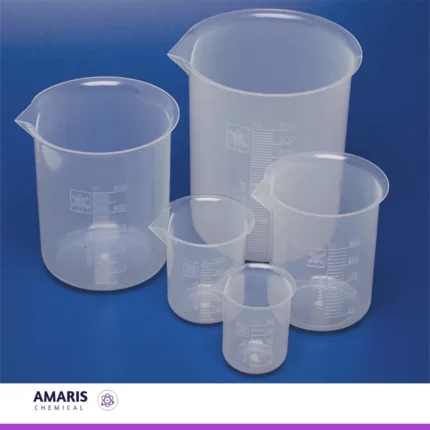“Amber Bottles Polystop” has been added to your cart. View cart

Banana plug
$400.00 Original price was: $400.00.$350.00Current price is: $350.00.

Wave machine
$2,500.00 Original price was: $2,500.00.$2,300.00Current price is: $2,300.00.
bunsen burner nipple
$350.00 Original price was: $350.00.$280.00Current price is: $280.00.
Whatsapp Order
A Bunsen burner nipple is an integral component of a Bunsen burner, a common piece of laboratory equipment used for heating substances. The nipple is a small, protruding tube or nozzle on the burner to which the rubber tubing from the gas source is attached. Here’s a breakdown of the key points related to a Bunsen burner nipple:
Function
- Gas Inlet: The primary function of the Bunsen burner nipple is to serve as the gas inlet. It connects the burner to the gas supply, allowing gas to flow into the burner.
- Attachment Point: The nipple securely holds the rubber tubing that delivers gas from the gas supply. This ensures a steady and controlled flow of gas.
Importance
- Safety: Proper attachment of the rubber tubing to the nipple is crucial for preventing gas leaks, which could lead to dangerous situations such as fires or explosions.
- Efficiency: A well-fitted nipple ensures an efficient and consistent flow of gas, which is necessary for achieving the desired flame characteristics (such as a non-luminous blue flame).
Maintenance
- Inspection: Regular inspection of the Bunsen burner nipple is important to ensure it is not clogged, cracked, or damaged.
- Cleaning: Keeping the nipple clean and free of obstructions ensures optimal performance of the burner.
Usage Tips
- Securing the Tubing: Always ensure the rubber tubing is tightly fitted onto the nipple to avoid gas leaks.
- Correct Size: Use tubing of the correct diameter for the nipple to ensure a snug fit.
SKU:
ACS21547CHEM0
Category: LABORATORY EQUIPMENT & APPARATUS
Description
Table of Contents
ToggleUses of a Bunsen Burner Nipple
1. Gas Inlet Connection
- Primary Function: The Bunsen burner nipple is primarily used to connect the burner to the gas supply. This connection is made using a rubber tubing that fits securely over the nipple.
- Gas Flow Regulation: It allows for a steady flow of gas into the burner, which is crucial for maintaining a consistent flame.
2. Ensuring Safety
- Leak Prevention: By providing a secure attachment point for the gas tubing, the nipple helps prevent gas leaks, which can be hazardous.
- Stable Operation: A proper connection ensures the burner operates safely without unexpected fluctuations in the flame.
3. Flame Adjustment
- Controlled Combustion: The nipple helps regulate the amount of gas entering the burner, allowing for precise control over the flame’s intensity and characteristics.
- Optimal Performance: Proper use of the nipple ensures that the burner can produce a non-luminous blue flame, ideal for most laboratory heating tasks.
4. Versatility in Laboratory Applications
- Heating Substances: The Bunsen burner, through the nipple connection, is used to heat chemicals, sterilize equipment, and perform various other heating tasks in the lab.
- Supporting Experiments: It is essential for experiments requiring controlled heating, such as chemical reactions, melting substances, or bending glass rods.
5. Compatibility with Different Gas Types
- Various Gases: The nipple allows the Bunsen burner to be connected to different types of gas supplies, such as natural gas or propane, depending on the laboratory setup.
Maintenance and Usage Tips
- Regular Inspection: Regularly check the nipple for signs of wear or blockage to ensure it functions correctly.
- Secure Fitting: Ensure the rubber tubing fits snugly over the nipple to maintain a secure gas connection and prevent leaks.
- Proper Cleaning: Keep the nipple clean to avoid clogs that could disrupt the gas flow and affect the burner’s performance.
Reviews (0)
Be the first to review “bunsen burner nipple” Cancel reply
Related products
Absorption Tower
$0.01
A laboratory absorption tower is a scaled-down version of an industrial absorption tower used for experimental purposes within a laboratory setting. It is a specialized piece of lab apparatus designed to investigate the principles of gas-liquid absorption or scrubbing processes under controlled conditions.
Typically, a lab absorption tower consists of a glass or transparent column filled with a packing material or trays to facilitate the gas-liquid contact. It is equipped with inlet and outlet ports to introduce the gas stream and remove the treated gas after absorption. Additionally, there are ports or connections to introduce the liquid solvent and monitor its flow rate. The tower may also have temperature and pressure control mechanisms to simulate specific conditions relevant to the experiment.
Laboratory absorption towers are essential tools for researchers, chemists, and engineers to study the behavior of gases and liquids during absorption processes, optimize process parameters, and assess the efficiency of different solvents or packing materials. These experiments contribute to the development and improvement of industrial-scale absorption systems and help in solving environmental challenges related to air and gas pollution.
Amber Bottles Polystop
$0.01
A laboratory glass amber bottle is a specialized container commonly used in laboratories to store and protect light-sensitive substances, chemicals, or solutions. These bottles are made from amber-colored glass, which provides protection against ultraviolet (UV) and visible light radiation. The amber glass helps to minimize the degradation and decomposition of light-sensitive contents by blocking a significant portion of the light spectrum.
The amber color of the glass is achieved by adding iron, sulfur, and other compounds during the glass manufacturing process. This coloration is what gives the bottles their distinctive amber or brown appearance.
Laboratory glass amber bottles typically come in various sizes, ranging from small volumes of a few milliliters to large capacities of several liters. They often have a screw-on or snap-on cap, providing a secure and airtight seal to prevent spills, evaporation, and contamination.
Due to their ability to protect light-sensitive substances, laboratory glass amber bottles are widely used in chemistry, biology, pharmaceuticals, and other scientific fields where sample integrity and stability are crucial.
Barlows wheel apparatus
$0.01
The Barlow's wheel apparatus is an experimental device used to demonstrate the conversion of electrical energy into mechanical energy through electromagnetic principles. It consists of a horizontal wheel or disk with radial metal spokes attached to its center. The wheel is mounted on an axle, allowing it to rotate freely.
Beaker Plastic
$0.01
A plastic beaker is a laboratory container made from plastic material, typically featuring a cylindrical shape with a flat bottom and a spout or pouring lip. It is used for holding, measuring, and mixing liquids or substances during various scientific experiments, research, or educational activities. Plastic beakers come in a range of sizes and are designed to withstand various chemicals and temperatures, making them versatile tools in laboratory settings.
bell in vacuum
$0.01
A "bell in vacuum" apparatus is a scientific setup used to demonstrate the effects of reduced air pressure (vacuum) on sound transmission. It typically consists of a bell or sound-producing object enclosed within a sealed chamber from which air has been removed, creating a low-pressure environment. This apparatus is designed to illustrate how sound travels differently in a vacuum compared to in normal atmospheric conditions, highlighting the role of air molecules in sound propagation.


 Emollients
Emollients Humectants
Humectants UV Filters
UV Filters Surfactants (cosmetic)
Surfactants (cosmetic) Preservatives (cosmetic)
Preservatives (cosmetic) Fragrances and Essential Oils
Fragrances and Essential Oils Antioxidants (cosmetics)
Antioxidants (cosmetics)
 Solvents (lab)
Solvents (lab) Chromatography Chemicals
Chromatography Chemicals Microbiology and Cell Culture Reagents
Microbiology and Cell Culture Reagents Biochemical Reagents
Biochemical Reagents Inorganic and Organic Standards
Inorganic and Organic Standards Spectroscopy Reagents
Spectroscopy Reagents Molecular Biology Reagents
Molecular Biology Reagents
 Precious Metal Extraction Agents
Precious Metal Extraction Agents
 Plasticizers
Plasticizers Polymerization Initiators
Polymerization Initiators Stabilizers
Stabilizers Monomers
Monomers Fillers and Reinforcements
Fillers and Reinforcements Antioxidants (plastics)
Antioxidants (plastics) Colorants (plastic pigments,Dyes)
Colorants (plastic pigments,Dyes)
 Fertilizers
Fertilizers Plant Growth Regulators
Plant Growth Regulators Soil Conditioners
Soil Conditioners Animal Feed Additives
Animal Feed Additives Biostimulants
Biostimulants
 Dough Conditioners
Dough Conditioners Flour Treatments
Flour Treatments Fat Replacers
Fat Replacers Preservatives (baking)
Preservatives (baking)
 Surfactants (cleaning)
Surfactants (cleaning) Builders
Builders Bleaching Agents
Bleaching Agents Enzymes
Enzymes Solvents (cleaning)
Solvents (cleaning) Fragrances
Fragrances Disinfectant
Disinfectant Metal cleaning
Metal cleaning
 Binders/Resins
Binders/Resins Pigments
Pigments Solvents (paint)
Solvents (paint) Additives
Additives Driers
Driers Anti-Corrosion Agents
Anti-Corrosion Agents Specialty Coatings
Specialty Coatings Functional Coatings
Functional Coatings Application-Specific Coatings
Application-Specific Coatings
 Sealants and Adhesives
Sealants and Adhesives
 Biodegradable Surfactants
Biodegradable Surfactants Bio-based Solvents
Bio-based Solvents Renewable Polymers
Renewable Polymers Carbon Capture Chemicals
Carbon Capture Chemicals Wastewater Treatment Chemicals
Wastewater Treatment Chemicals
 Preservatives (food)
Preservatives (food) Flavor Enhancers
Flavor Enhancers Acidulants
Acidulants Sweeteners
Sweeteners Emulsifiers
Emulsifiers Antioxidants (food)
Antioxidants (food) Colorants (food)
Colorants (food) Nutrient Supplements
Nutrient Supplements Nutraceutical Ingredients
Nutraceutical Ingredients
 Fresh Herbs
Fresh Herbs Whole Spices
Whole Spices Ground Spices
Ground Spices Spice Blends
Spice Blends
 Surfactants(oil)
Surfactants(oil)
 Antibiotics
Antibiotics Active Pharmaceutical Ingredients
Active Pharmaceutical Ingredients Excipients
Excipients Vaccine Adjuvants
Vaccine Adjuvants Nutraceutical Ingredients
Nutraceutical Ingredients Solvents (pharmaceutical)
Solvents (pharmaceutical)
 Automotive chemicals
Automotive chemicals Pyrotechnic Chemicals
Pyrotechnic Chemicals


 Vulcanizing Agents
Vulcanizing Agents Accelerators & Retarders
Accelerators & Retarders Antidegradants
Antidegradants Reinforcing Agents
Reinforcing Agents Plasticizers & Softeners
Plasticizers & Softeners Fillers & Extenders
Fillers & Extenders Blowing Agents
Blowing Agents Adhesion Promoters
Adhesion Promoters






















Reviews
There are no reviews yet.